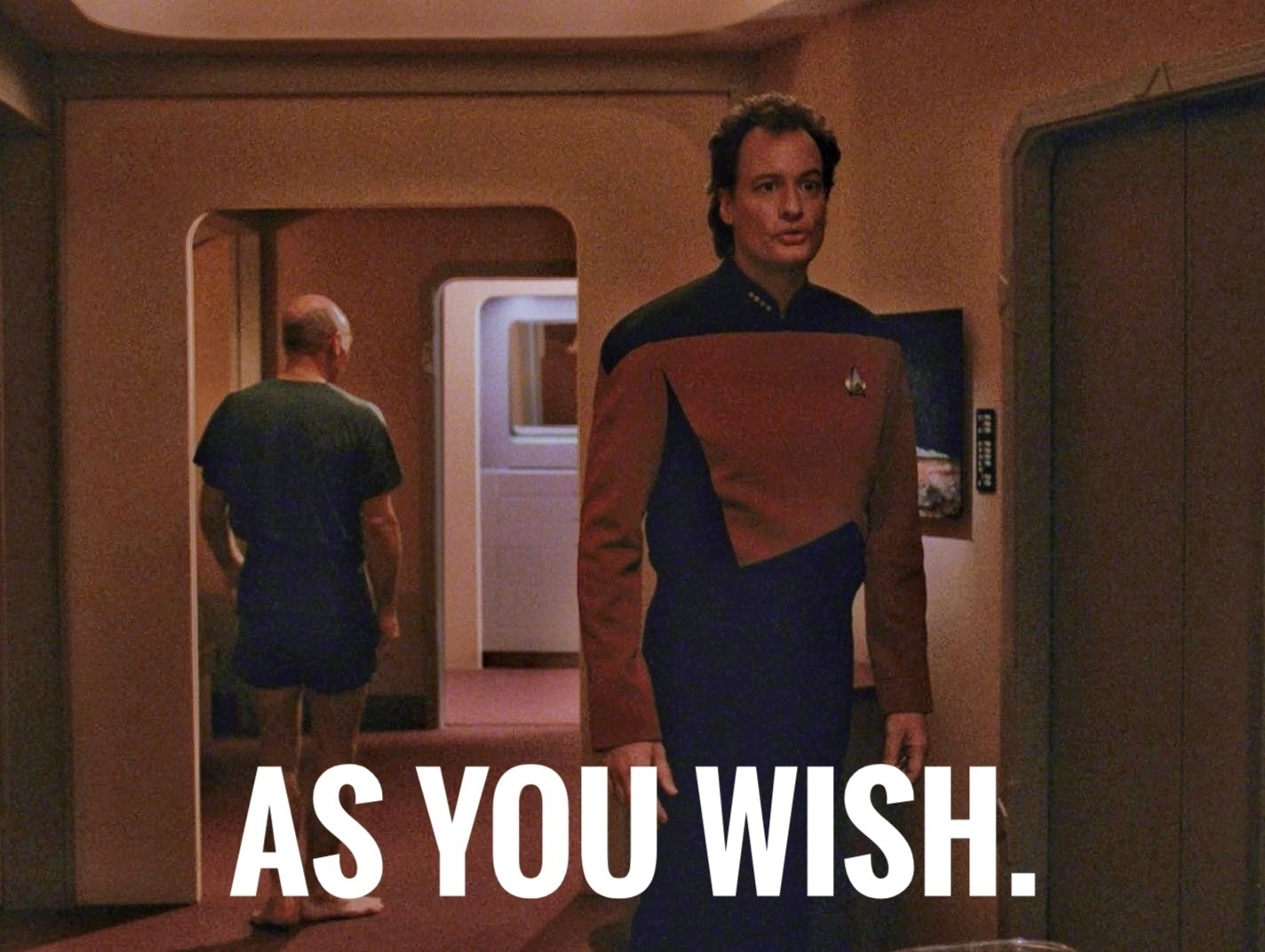I appreciate the implication from Star Trek: Picard that our timeline is the horrible timeline Q created. 🖖🏻📺
Posts in "Star Trek"
💬📺🖖🏻 “Exhilaration enhances the absorption of knowledge.” Picard, 2x01, “The Stargazer” [Cool how this sums up my whole deal.]
💬📺🖖🏻 “The part of me that really wants is the part that has to wait in line.” Picard, 2x01, “The Stargazer”
Scene: Today’s Micro.blog Meetup
Them: I have writer’s block and was hoping to get ideas for how to bust through it.
Me: Let me tell you about my TNG fanfic where Data teaches Geordi improv.
🖖🏻📝
#StarTrek:The Next Generation Season 4 Episode 20 “Qpid” aired 04/22/91. 🖖🏻
Q: You would have me stand idly by as she leads you to your destruction?
PICARD: Yes!
Q: As you wish.
The Princess Bride was released on 09/25/1987.

Realized today as I was listening to the John de Lancie episode of Gates McFadden Investigates that I would 100% sign up for a Star Trek acting intensive with those two as teachers. 🖖🏻
The Kimberly urge to write Picard/Gomez fic. 🖖🏻
Burnham’s “Let’s fly” is probably the best captain catchphrase but Dal’s “Go fast” might be a close second. 🖖🏻
I am immensely pleased to be getting so much new Star Trek in the next few months. 🖖🏻
How Connected Learning Happens in Libraries
This is the second post in a series contextualizing my position as a researcher of connected learning. Here are all the posts published so far:
- What Is Connected Learning?
- How Connected Learning Happens in Libraries
The first element of connected learning is interest. Libraries explicitly support the exploration of personal interests in both their collections and their programming. The second element is relationships. Libraries are intergenerational spaces that can be (but aren’t always) inclusive of people from nondominant groups. Libraries can serve as a bridge that connects formal and informal learning. Libraries are increasingly spaces where youth can have shared experiences creating new knowledge. They are third places, neither school nor home, where youth can gather, connect around their shared interests, and meet adult mentors and sponsors who can help them leverage a variety of resources in pursuing those interests.
A note about third places in the time of COVID-19: For many of us (the luckiest among us, I would argue), there is only one place: home, which is also work, which is sometimes also school, which is also where we do whatever social activity we do. This is certainly true for me. That said, online library programming can act as a virtual third space, a place to go for something that isn’t all about home or work responsibilities. I’ll be interested to see how scholarship around this shift evolves. A quick search for “‘third places’ COVID” on Google Scholar demonstrates that scholars are already thinking about this, including in the specific context of public libraries. I am exercising extreme restraint to not jump down a rabbit hole of exploring that research right now.
There are some examples of connected learning happening in both public and school library spaces. If you’d like to explore them, here are some links:
- YOUmedia Chicago
- Young Urban Scholars book club
- An afterschool program for inner city, middle school students to imagine STEM’s relevance in their lives
- Hack the Evening
- Publications from ConnectedLib
The next post in this series will discuss some of the challenges of creating connected learning experiences in libraries and some shifts libraries may need to undergo to provide more connected learning experiences.